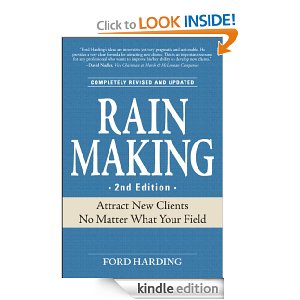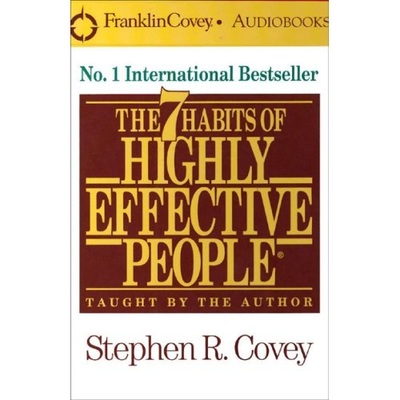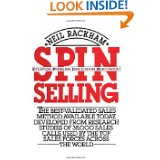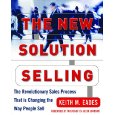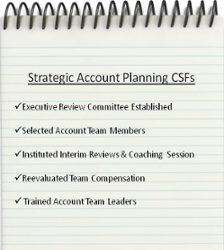|
I recently answered a question on LinkedIn that asked for book recommendations for business development. The question gave me a chance to reflect on several significant and memorable sales and marketing books that I’ve valued throughout my career. Though several of the books chosen were written many years ago, the foundational principles discussed are still relevant today. I would recommend that anyone who is responsible for business development to read (or at least skim) these books, regardless of their business development role or experience level.
Rain Making: Attract New Clients No Matter What Your Field by Ford Harding A must-read for all “non-salesy” delivery consultants regardless of level. Ford writes from the heart and with personal experience attempting to help more analytic professionals be better marketers of their services. Ford updated the book and it was re-released in 2008. If you find sales calls and networking intimidating, this is the book for you. Ford explains hundreds of techniques, tools, and exercises that can be used to build and expand your professional network. Members of large professional services firms with many service offerings, should pay particular attention to Chapter 13 where Ford describes his BEST (buyers, events, signals and techniques) cross-selling model. It's the best I've seen--adding science to the art of successful cross-selling. If you have any questions on what marketing tasks you should be doing to help you build your personal brand, they will be answered by Ford. The 7 Habits of Highly Effective People by Steve Covey This book was published in 1989 and thought to be “old fashioned” when published. The book is not so much about sales and marketing but it gives timeless advice for life in general. Contrary to contemporary how-to business books that stress appearance and style, Covey re-surfaced the argument that personal character, purpose, and self-discipline were the keys to business success. He was also one of the first to stress the need for work-life balance. Perhaps his Mormon beliefs and learnings contributed to his simple, common sense life recommendations. He died recently while writing several books including one on how to reduce crime. How: Why How We Do Anything Means Everything by Dov Seidman I would make this required reading in every university’s business ethics +/or self-awareness curriculum. It would do wonders improving the image of the sales profession. In my opinion, it is one of the best customer relationship books ever written. As the title states, the book stresses the importance of how you do things, not what you do. There are no templates, process charts, complex models or activity lists, but it is full of wisdom and good advice. Seidman believes that the flood of information, the transparency of a company’s products, services and performance, our increasing interconnectedness, and our global interdependence have changed the rules of the game. He believes the qualities that many once thought of as soft, immeasurable values-trust, integrity and reputation- are now the primary drivers of business growth and success. How we behave is now more important than our products or services. Take a read, I think you’ll find his insights particularly relevant in today’s social media culture. SPIN Selling by Neil Rackham “Situation - Problem - Implication - Need” leads to the buyer and seller’s mutual payoff. Get past the name and read about one of the earliest and most thorough research studies on sales effectiveness - how goods and services are really bought and sold. Based on the work of Michael Huthwaite and his research team, including author Neil Rackham, the book analyzes and documents twelve years of sales performance in twenty of the world's leading sales organizations, including 35,000 transactions, involving 10,000 salespeople and 100 sales managers in twenty-three countries. Huthwaite’s extensive sales research (at the time, the first in 50+ years) and recommended sales model, created the foundation for most of the sales how-to books written in the last 20+ years. Read it first and you’ll recognize the research findings embedded somewhere in each of my other book recommendations. The book successfully proved that more complex sales required a new seller skill set (and model) than previously thought. In fact, the commonly taught and used “feature-function-benefit” sales approach actually reduced the probability of winning modern consultative sales. Either of the Solution Selling books: Solution Selling: Creating Buyers in Difficult Selling Markets by Michael Bosworth The New Solution Selling: The Revolutionary Sales Process That is Changing the Way People Sell by Keith Eades Review them both, I suspect you will get valuable ideas you can use immediately from each. If you're like me (and most of my clients) you’ll have several “That’s happened to me!” or “Oh, that’s why that happened.” moments as you read. Like the Rackham SPIN Selling book, the business development tools, techniques, and templates provided are timeless. I tell people who doubt the value in some of the concepts, try each three times and if it doesn’t work discard the notion. For immediate return on your money and time investment, pay particular attention to the concepts of: ● The three phases of shifting buyer concerns ● Reengineering the prospect’s vision of a solution and ● The sales opportunity evaluation plan: project managing the buying decision steps Even the most experienced business developers and marketers will learn new ideas or be reminded of concepts they had utilized in the past but perhaps have gotten away from. Also, recent sales research is stressing the need for "new insight-based" selling techniques [I would argue that this is really not "new" at all and has been in practice for years]. The solution selling architecture provides the ideal framework to integrate these approaches into the buying/selling process. I would also recommend that you spend the extra money and purchase the accompanying Solution Selling Fieldbook by Eades, Touchstone and Sullivan which includes a software CD that provides countless sales aids, templates, and examples. So, that is my recommended business development reading list. Give these books a try and let me know what you think. What other books have you read that stand out in your mind and why? I’m always looking for a good instructional read.
0 Comments
We are often engaged by clients to help resolve a specific sales issue they’ve identified. Before we get too far along, we always spend some time upfront to ensure we understand the issue, including all root causes, and are solving the right problem. What usually surfaces is that the problem that needs to be solved is not the original issue perceived by the client. Sometimes it’s closely related and other times it is much farther afield. So why is it so difficult to identify the real, underlying sales issues in our organizations? Here are three reasons we’ve encountered: Reason 1: The Power of Suggestion We're sometimes thrown “off the scent” because a reputable vendor has suggested we suffer from an issue their product or service addresses. We often defer to a vendor’s expertise, assuming they have more external data and understand common sales productivity issues better than we do. An example of this would be with CRM vendors. We’re all inundated by sales tool vendors pitching us on what we need to make us more productive sellers. CRM vendors preach that if we only had a standard sales approach, sales opportunity repository, and a management dashboard-- sales would almost manage itself. Many companies rush out and buy applications without fully understanding the problem they truly need to solve. Reason 2: The Sales Stakeholders Are Too Close to the Current Sales Process We suffer from what psychologists call an inside-view. This is a common problem; people who have knowledge of their own situation rarely have the external comparative data necessary to recognize what they don’t know--the unknown unknowns. This lack of an outside-view is the same reason that public works projects typically run 3-10 times original estimates and that kitchen renovations run, on average, thirty percent more than originally planned. Though we allocate time to read research reports and meet with vendors to gain an outside view of industry trends, as quarterly deadlines arrive these tasks are the first to be put on the back burner. Reason 3: Stakeholders are Too Far Removed From the Sales Function Company executives sometimes become so insulated from the sales process they lose awareness of the company “sweet spot” and how the salespeople successfully represent company solutions. They can become too distant from the sales process to understand which of the moving parts may be out of spec and need tuning or a major overhaul. All executives should accompany salespeople on customer visits periodically to stay current on buyer-seller behavior and market trends. The best way to understand current sales issues (and to ward off potential new ones) is to make sure you are walking in your sales staff’s shoes often enough. Consider initiating an executive account sponsorship program and/or assigning yourself a monthly sales call quota to help stay in-front of prospects and customers. In our experience, the more removed executives are from the day-to-day sales process, the less-likely they are to understand potential sales obstacles. To follow are 4 client examples that illustrate how the underlying cause of poor performance differed from the original, perceived problem: Client 1: “We’re losing deals because our pricing is too high.” The Board of Directors of a cloud software company was trying to mediate a dispute between the sales and marketing functions over the issue of non-competitive pricing. The salesforce felt they were losing an extraordinary number of deals due to pricing. Marketing was not so sure of the reason(s) for recent sales losses. We found out that pricing was an issue-- but it was the pricing architecture rather than the price points that was causing the problem. Some smaller deals were being lost due to pricing, but more often, larger deals were underpriced and sold at less-than-market rates leaving money on the table. Client 2: “Our sales force doesn’t communicate our value messaging effectively.” At one of our clients, a value messaging vendor had convinced them that their messaging was detracting from their brand and impeding sales. If only they you could update their positioning and create a more concise, compelling value proposition, their problems would be solved. But of all the potential obstacles impacting your sales organization’s effectiveness, the likelihood that your value messaging is the prime culprit is unlikely. In this case, the client’s issue, based on our research and analysis, was that they did not have a consistent approach to territory planning and sales opportunity pursuit--not their messaging. Client 3: “Our win rates are trending lower due to competitive pressures.” A high-tech manufacturer saw their win-rate, as documented in their CRM system, was below peer benchmarks. This was unusual since most CRM systems show artificially high win-rates -- caused by the salesforce’s reluctance to enter earlier stage, lower-probability sales opportunities--preferring to wait and enter later stage, higher-probability deals. Subsequent research by our team led us to scrutinize their RFP response process rather than focusing on the perceived diminishing win rates. We found they were entering the prospect’s buying process much too late to be successful. Client 4: “Our product functionality is not competitive.” A website development tools and training vendor asked us to create and deliver a customized sales training program. The company had noticed an increase in lost deals (as compared to prior measurement periods) and felt new sales skills training was needed. The feedback from the sales people was that their product functionality was not as robust as the competition. Our research determined that the product was not inferior. The real problem was that the entire organizational sales process (and compensation) was built exclusively around the scheduling and delivery of a detailed product demonstration. The demonstrations were being conducted too early and out of alignment with the prospect’s buying process-- long before there was an understanding of the prospect’s business issues. Until this critical sales process flaw was addressed, any generic sales training investment would have been a waste. Summary Accurate self-diagnosis of sales issues is a common problem. Remember that all things are not as they seem. You’ll need to dig deep to unearth the root causes. Don’t be unduly influenced by vendors--assuming they know more about your business than you do. Consult with your first-line sales managers and a sampling of all levels of sales performers to receive input. A consensus root cause will usually emerge. Make sure to take an "outside view" of the situation. If you decide to use external help to improve your sales performance, make sure you allow them adequate time to perform their due diligence--this will ensure you are addressing your most critical sales issue In last week’s blog posting, Improve Your Sales Hiring Success Rate: One Method That Can Help, we discussed how creating a standardized sales hiring template will boost sales productivity and increase your sales hiring success rate. The following is an example of a statistical interviewing template that I would use for a hypothetical consultative sales business. The template describes my 6 desired sales traits, with weightings, and my 3 sample questions per trait. Your desired traits and test questions will differ based on your offers, market, and culture. 1. Intellectual Curiosity (25%) - I need someone who will do more than the research required to differentiate themselves and ask the appropriate questions of a prospect. More importantly, I want them to be smart, listen well, have follow-up questions, and add-value in every sales discussion. I also want them to take the time to research things they don’t know and show evidence of being a life-long learner.
2. Tenacity (20%) - It takes, on average, seven attempts to get an executive prospect to listen to your value-proposition. The average salesperson stops at four attempts. I want someone who will make the seven attempts without being annoying and tarnishing the brand. They must be equally tenacious securing internal resources helping to win deals.
3. Creativity (20%) - I want creative thinkers who can invent and apply new ideas and concepts in all selling environments-- from prospecting through contract negotiation. What is their networking strategy- can they think of innovative ways to meet hard to reach prospects? Can they initiate contact with a prospect for the 7’th time without being a pest and by adding some new information of value? What new ideas, concepts, or resources would they introduce during the buying cycle to tip the buying decision in our favor?
4. Financial Ambition (15%) - Ultimately, my new salesperson’s life goals need to have a large financial component to keep them self-motivated. This will save a great deal of my sales management time and effort. I might assign a greater weight to this trait in a less consultative, more transactional sale.
5. Social Nature (10%) - I need personality types who enjoy being around people and can show empathy and understanding for the life and career goals of others. Successful teaming in past life, work, and in sport settings is a good indicator of future success in my sales model.
6. Competitive Spirit (10%) - Very simply, I want bad losers but not those who are afraid to fail. It’s essential my sales team knows when they are winning and when they are losing and why. They must be able to act aggressively when there is nothing to lose. They must also demonstrate that they can readily rebound from a loss and be willing to help the organization learn from it.
Score:________ Candidate Total: ________ Other candidate impressions and observations: __________________________________________________________________ _________________________________________________________________________________ _________________________________________________________________________________ _________________________________________________________________________________ Summary Sales roles are too strategic and expensive to be staffed subjectively. Use a team approach to build your template traits to avoid hiring people only in your own likeness. Consider including the traits of your best performers. If you would like to discuss the template in more detail, please contact me. Sales hiring is one of the most important tasks an organization undertakes. For the record, I have personally hired a countless number of successful—and not so successful—sales people. In many organizations it's the role hired most often; usually in field locations far from any hiring process oversight. Because of this, it is easy to become complacent and stray from established hiring process disciplines. Your sales team is the face-to-face embodiment of your brand and may be your one-and-only chance to convey your organization’s capabilities to potential buyers. An inappropriate sales hire, who misrepresents your company image, can cause significant damage to your business. Only 54% of Chief Sales Officers Are Satisfied With Their Sales Hiring Results According to a recent CSO Insights survey of approximately 2,000 Chief Sales Officers, only 54 percent reported satisfaction (met or exceeded expectations) with their new sales hires. In spite of this satisfaction rate, 68 percent of executives planned on adding sales personnel and 93 percent planned on raising individual quotas for 2012. The question: How do you hire a high performing sales team with a greater probability of success? Increase Your Success By Using Statistical Interviewing Techniques Statistical interviewing methods attempt to minimize interviewer subjectivity and bias. The benefits of this method were first introduced by Paul Meehl in his book Clinical vs. Statistical Prediction: A Theoretical Analysis and a Review of the Evidence in 1954. Meehl's research, as well as the subsequent research of others, clearly shows that predictions based on simple statistical scoring were generally more accurate than predictions based on perceived expert judgment. Daniel Kahneman of Princeton University has furthered Meehl’s research in his recent book Thinking, Fast and Slow. Kahneman details the general phenomenon he called the illusion of validity. In this case, the illusion of validity was the interviewer’s false belief in the reliability of their own judgment; believing they could predict the performance of a recruit after only a brief, 15 minute informal conversation. In Kahneman’s study, he didn’t allow the interviewers to engage in free-ranging conversations with the recruits. Instead, they were required to ask a standard list of factual questions. The answers were converted to numerical scores and entered into formulas measuring the recruits aptitude for the various roles. When the predictions under the new system were compared to actual performance several months later, the results showed the new system was much better at predicting results. Five Steps to Developing Your Own Standard Sales Hiring Interview Template Step 1 - Decide what 4 to 6 personal traits are important for your sales team members to possess. Use a team approach for trait development to avoid building the trait profile in the image of the creator. Keep your selling process and your buyer’s buying process in mind as you determine the desired top traits. Consider using Talent Analytics' tools and dashboards providing comparative data to current top sales performers and teaming considerations. Create a formula weighting each trait for its relative importance. Step 2 - Train your interviewers on the importance of adhering to the standardized interview questionnaire. Step 3 - Create several factual work and life evidential questions (3 to 5 per trait) to measure interviewee responses. Score each response and enter the score into your weighted traits selection formula. Step 4 - Stack rank your sales candidates and make your employment offers. Avoid the temptation to overrule your formulaic results with any subjectivity or personal biases. Step 5 - Revisit your sales hiring “formula” periodically to adapt to changing sales role requirements and market conditions. Summary: With sales roles becoming increasingly complex, sales organizations need to utilize proven methods to improve their sales hiring success rate. Use the five steps outlined in this article to create an objective interview template for your candidate selection process. Team performance predictors, like the CORE Style and Ambitions Questionnaire from Talent Analytics, can also help validate your statistical scoring results. Read the longer sales hiring article on our website to learn more of how these two valuable hiring concepts can work together to improve your new sales hire success rate. Read our follow-on post which illustrates the above concepts: Increase Your Sales Hiring Success Rate With This Simple Template I am often surprised by how few companies conduct a periodic examination of their sales model. With the cost of sales being one of the most expensive line items in your company's budget, an annual check-up may seem like common sense, but it is not unusual for it to be overlooked. Revenue growth pressures and day-to-day people management issues can easily take priority. However, if left unattended, changes in market dynamics, buyer behavior, and the competitive landscape can create chaos in your sales process and reduce win-rates. To confirm that you're maximizing your sales investment dollar, we recommend conducting a simple, annual sales check-up. This quick, 5-point assessment will help identify and prioritize any sales ailments before they become chronic. With your sale leadership, review your organization’s overall sales approach and rate your findings on a scale of 1 to 5: 1 = This is a weakness, 2 = Not too often, 3 = Sometimes, 4 = Most of the time, 5 = This is a strength.
This simple, 5 point assessment tool will help determine if your sales model requires a more in-depth diagnosis. If you scored 20: Go ahead and worry about something else. If you scored <20: Dig a little deeper to diagnose the underlying issue(s) The sooner you can identify and address any sales health issues, the better your long-term prognosis will be. I recently participated in the Solutions Insights research on Key Account Marketing Programs. The research project made me think of my own experiences designing and implementing a Strategic Account Marketing Program for a Big 4 global consulting firm. Our research showed that we were not being considered for large sales opportunities--which we were qualified for--within our key accounts. Many times, we became aware of large projects after they had been awarded. This finding was particularly troubling since our success rate, when invited to compete, was extremely high. In baseball terms, we had a great batting average once we were allowed to swing the bat; we just needed to get into the batters box more often. To address the issue, we created a Strategic Account Marketing Program that assigned a senior marketing resource to selected account teams. We believed the addition of a marketing resource would increase our visibility within key accounts. Based on my experiences, here are 4 recommendations to help make your Account Marketing Program a success: 1. Pilot a Proof-of-Concept Before you begin, you must ensure that you have the support of the executive team. Strategic Account Marketing Programs can be complex with a lot of variables to control. Determine the most likely source of long-term funding up front to ensure the program has time to reach its full potential. Depending on the size of your organization, a 2 year funding commitment is not unreasonable. In our case, we had global funding for an initial 12-month, six-account global pilot. After that period, we needed buy-in from the line profit-and-loss leaders to provide longer-term management and funding. In hindsight, twelve months was too short a period to prove the impact of the program and secure a long-term funding source. 2. Create an Integrated Account Team The sales and marketing organizations should work hand-in-hand to build a strategic plan that unifies your brand and strategizes your account as a “market of one”. All account messaging and activities should adhere to the strategic sales and marketing account plan. This may require controlling or restricting account access to the primary account team. This may also mean respectfully declining to respond to RFP’s deemed to be slightly off the market of the One Brand message. As importantly, select the key account leader wisely. Whether it be a Client Service Executive, an Account Relationship Manager, an Industry Partner, or a Country Manager-- seamless linkage with, and buy-in from, the global sales organization, and as in our case--the Lead Partner--was essential. Teaming and cooperation from all sales stakeholders is critical. Even with minimal cost to the sales department, it will be impossible to effectively embed a senior marketing resource into any key account team without agreement from the sales function. Early involvement of the sales team leadership will help to avoid cultural rejection of the transplanted marketing resource. 3. Assign Your Best Marketing Resources to the Program Avoid accepting first available or under-performers from other marketing units to staff the newly created key marketer role. The success of the pilot, and the longer term program, is dependent upon the quality of the assigned marketing resources. A senior marketer with industry and relevant experience will quickly demonstrate their value. In our pilot, we enlisted senior marketers who could strategically position our firm verses our competitors. They were also able to discuss future industry trends. We labeled this capability “Big M” marketing skills. Previous face-to-face selling or delivery experience also increased their credibility with the account team. 4. Tailor Thought Leadership and Points-of-View Marketing Materials Too often, sales organizations print generic marketing materials that can be given to all clients, regardless of business problems or industry. To be effective, materials must be tailored to the concerns of the client and their industry. Thought leadership documents and whitepapers, that specifically address critical client issues, will help you gain credibility faster and get you invited to compete more often. Your goal is to position your organization as the one which is best suited to help solve their specific business issues-- as a “market of one”. In order to save time and effort, attempt to re-purpose existing materials rather than creating totally new content. In addition, marketers must now control their messaging across all the various online channels. Your website, blog, and social media presence should all have consistent messaging that reinforces your brand and is tailored to the client’s industry and business issues. Summary Understanding your key account’s industry and business issues are paramount to the success of any Strategic Account Marketing Program. Aligning your marketing messages with the account’s strategic direction will make you eligible to compete more often. Allocating the right marketing resources to the sales team is often the key variable in the program’s success. 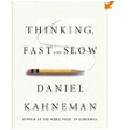 “Whenever we can replace human judgment by a formula, we should at least consider it." --Daniel Kahneman, 2002 winner of the Nobel Prize in Economics and author of Thinking, Fast and Slow, named one of the best books of 2011 by The Wall Street Journal, The Economist, and The New York Times. Reading Kahneman’s book reminded me of how important it is to remain open-minded and objective in business, especially in the conclusions we draw and the decisions we make. The path to extraordinary growth with our most significant accounts is no exception. Every good large account planning effort should involve an account plan presentation to a review board of executive stakeholders. Ideally there would be two reviews annually-- a one-hour initial account plan overview and an abbreviated follow-up review three to six months later. As the number of accounts planned and presented increases, it is essential to find an efficient method for reviewing the accounts and providing feedback to the teams. Like a newborn wellness Apgar test, we developed a simple, 6-dimension scorecard to assist in the evaluation and feedback process. The scorecard can be tailored and weighted according to your strategic account environment. If you prefer, use a “very weak” to “very strong” scale rather than points to assess your account teams’ plan presentations. Measures of Account Team Competencies: 1. The Customer’s Environment (20 Points) _________________
2. The Account’s Key Financials (Total 10 Points) _________________
3. The Current Relationship (Total 25 Points) _________________
4. Planned Strategy and Execution (20 Points) _________________
5. Additional Resources (10 Points) _________________
6. Team Self-Assess: What has the Team Learned Through the Strategic Account Planning Process? (15 Points) _________________
Evaluator Notes (additional comments on the plan presentation): ACCOUNT PLAN TOTAL (100 possible points): _____________ Summary: This standard account scorecard can help make the team feedback process more productive for the account team and more efficient for the executive reviewers. It will provide a reference point from which to build your own account plan criteria and associated scoring. Use the final scores to prioritize which accounts require additional management oversight. I have had the recent opportunity to consult on several large account sales planning initiatives in the high-tech industry. Leading a corporate-wide strategic account initiative is a challenging role with a lot of responsibility and visibility. If you are successful, you’ll be well rewarded. If not, the outcome can be unpleasant. From my observations, there are five factors that must be present to increase your probability of success: 1. An Executive Review Committee You must have executive stakeholders committed to the strategic account program. Geography leaders, sales management and product-line leaders should all be represented on the executive review committee. The formation of the committee will demonstrate commitment to the program and ensure the planning process gets the time and the attention it requires from the account teams. The committee will be instrumental in reviewing the initial and follow-on account plan presentations and making recommendations for supplemental actions, investments, and resources. 2. Ability to Select the Composition of the Account Teams A complete team will most likely include representatives from: global sales, marketing, sales support, engineering, manufacturing, the product lines, post-sale implementation and quality support. If potential participants can have a significant impact on the account, they should be involved. Even the best designed planning sessions will be undermined if the relevant team members are not present. All members need to be actively involved as a unified team to best understand, strategize, and plan the targeted account. 3. Authority to Institute Interim Plan Reviews and a Team Coaching Process The best programs provide interim plan development reviews to give the cross-functional teams feedback on their draft plans. For example, a 90-day planning process may warrant 30-day and 60-day coaching sessions to improve the quality of the final plan. Interim reviews will help identify the need for any additional data or resources required. A final draft rehearsal should also be scheduled. The team rehearsal will significantly improve the quality of the final account plan presentation to the executive reviewers. 4. Ability to Influence (or Set) Account Team Compensation Major account planning and execution is a team activity. As part of the program, team roles, responsibilities, and incentives must be reviewed and updated. The program leader needs to be able to influence team compensation in order to drive the desired behavior and reward positive results. In most situations, growth within an account is a team effort. No single team member should receive a financial windfall. Compensation models should be designed to financially reward all team members when account growth exceeds expectations. The involvement of HR will be essential. 5. Global Account Sales Team Leader Training Global team leaders will require additional training to manage the newly-formed teams. As in professional sports, the best performers do not always make the best coaches. Pipeline management, sales opportunity coaching, selling skills assessments, and performance review input are typically tasks assigned to global account leaders--regardless of the sales model implemented. You’ll need to partner closely with HR to make sure your account leadership career model and training aligns with your role expectations. When done correctly, with the right level of corporate commitment, leading a global strategic account planning initiative can be profitable to the organization and rewarding for the leader assigned. Though there are many factors that contribute to a successful account plan initiative, control over the five key areas I’ve mentioned will provide a strong footing upon which to build a successful program. You may also be interested in our case study, "Strategic Account Planning in a Global Team Environment at Analog Devices". One of the most difficult tasks a first-line sales manager has is ensuring that the sales opportunities recorded in the CRM system are accurate and up-to-date. Sales data accuracy and compliance is a Top 3 issue stated by most sales managers worldwide. CRM compliance is critical for accurate sales forecasting, sales resource allocation and sales opportunity coaching. But one of the most important reasons to keep your CRM system current is to identify higher value opportunities at an earlier stage in the sales process--opportunities that otherwise would have gone unnoticed. Not all sales opportunities are created equal Deal size, earliest close date, and greatest win probability are important, but are not the only criteria by which to assess value. While scanning your sales pipeline look for the hidden benefits from opportunities that have the following characteristics: A customer “must-solve” issue A must-solve issue often stems from a regulatory or government mandate, a competitor’s market disrupting technology or an extremely obvious and short return-on-investment timeframe. Identifying and prioritizing must-solves will decrease the probability of delayed or no-decision outcomes. A 2011 CSO Insights survey of 1500 sales leaders reported a "no decision" rate of 24% in forecasted sales opportunities. An early stage co-venture opportunity Not every joint-venture requires formal shared economic interest to be attractive to potential customers. Be creative and consider deploying your executives and subject-matter experts, in addition to your sales account team, to improve and build upon the prospect’s initial requirements. In competitive sales situations, it's the most innovative and practical solution with the greatest economic value-- rather than salesmanship or pricing--that wins the deal. A solution that can be replicated across your customer base What can you learn from this sale that you can apply elsewhere in your sales pipeline? Could it become a case study? Or, maybe a differentiating reference into a new market? Determine how many additional companies in your target market would be interested in this new offering. Also consider the value of any ancillary sales opportunities that might be created. Remember, not all sales opportunities are equal. The biggest advantage to an accurate and up-to-date CRM system is the ability to assess all opportunities, for their true value, at an earlier stage in the sales process. Examine your CRM system regularly to identify the opportunities where you can differentiate your organization and add the most value to your customer's business. At the Whitespace Consulting Group we have embraced inbound marketing “wholeheartedly" -- at least some of us have. Others (mostly me), have been dragged along kicking and screaming. We are fortunate to have someone on staff that lives and breathes the stuff. Luckily, she had the fortitude to convince us that we were leaving opportunities on the table because we were not marketing to our target audience in the way that they wanted to be engaged. “You’ll never have to make a cold-call again!” she exclaimed with the conviction of an evangelist. Point out a creative way to engage a potential client, and you have my attention. So now she badgers me into writing blogs and white papers--and then edits them to mind numbing distraction. She peppers my text with keywords that have been run through a ranking tool, and then twists the wording of my titles until I no longer recognize them as my own. I have a twitter account, @WhitespaceCG, and a couple of followers. She says I’ll get more. We’ll see. All done for the greater marketing good, but maddening none the less. On a recent walk past her workspace, I noticed no less than four open books, plastered with post-it notes, with titles such as, The New Rules of Marketing & PR, Real-Time Marketing & PR, Content Rules, and Twitter for Dummies. (I knew I should never have approved that expense to the INBOUND conference.) I probably would have abandoned the whole program long ago had she not threatened to leave me and take the kids. OK, it’s a bit overstated, but you get my point. Believe me, during our bouts of editing I’ve often thought that maybe a life alone wouldn’t be so bad... But then I realized that I'd lose my last remaining excuse for not publishing more. So as you can see, I’m putting in the work and doing my best to create content that is worth reading and engaging to my targeted audience. That being said, I’m getting a little weary of articles proclaiming, “ The End of_______” or “_________ is Dead”. You fill in the blanks. I know that in the crowded world of thought leadership marketing we should be provocative and use keyword rich titles to get found. I do it myself (or at least I try). But please, can we make an agreement that you have to back-up your headline with substantive arguments or supporting facts that are somewhat related to the topic. There is nothing more disappointing than clicking on an eye-catching, pulse-racing headline with the excitement of a kid at a circus and finding that the content doesn't match the title or adequately defend the claim. Why do people jeopardize their credibility just to get hits? What’s the sense in “getting found” if you're then dismissed for being manipulative, or for not having command of the topic. While reading what otherwise might be a fine article— that deserved its own catchy title— I get annoyed and end up discounting the content and the author. Do we only care about our 15 minutes of fame, that viral video, the greatest number of followers and hits? I understand the quest to get noticed, but there has to be a balance. Maybe I’m expecting too much— let's hope not. I was recently scanning some research from CSO Insights that discussed sales management priorities. One particular research finding caught my eye: 57.8% of sales managers planned on investing non-selling time to create account plans for their second-tier of accounts. The managers felt that additional planning (and training) was necessary in order to effectively influence the myriad of cross-functional stakeholders now commonly involved in the buying process. Planning this next tier of accounts can be a good investment, assuming you have the budget, the executive commitment, and the support resources necessary to execute against the plans created. But before you invest the additional time in the second-tier, you need to honestly assess whether or not you are maximizing the revenue opportunities in your top-tier accounts. One way we have successfully generated additional top-tier revenues is by creating a Strategic Account Executive Sponsorship Program. What is a Strategic Account Executive Sponsorship Program? A Strategic Account Executive Sponsorship Program assigns company executives to top-tier accounts (those with the greatest current or future revenue potential). The sponsoring executive then becomes a member of the account sales and marketing team targeted with growing the account and defending against competition. The theory is that with executive sponsorship, the account's revenues will grow incrementally at a faster rate than without sponsorship. Our experience with these programs shows good results when they are designed correctly--with the appropriate level of the assigned executive’s time and effort. Key Attributes to a Successful Strategic Account Executive Sponsorship Program To follow are the attributes needed for a successful program: 1. Executives are assigned to strategic accounts based on their domain knowledge, comfort level, and past industry experience. For example, you may decide to assign your VP of Manufacturing to an account who prides itself on their leading-edge supply chain efficiency; your CFO to an account with the most state-of-the-art financial systems; your Chief of HR to an account that runs an HR system from the same vendor as you do. This may seem like common sense, but you’d be surprised how often companies fail to map their executive strengths to the account. Also consider inviting any willing (and qualified) board members to join the program to help cover additional accounts. 2. The executive is formally integrated with the sales account team and support resources assigned to the account. The sponsorship program should be integrated and complementary (rather than separate) to the sales team’s efforts. This includes executive involvement in the account planning process and the providing of status updates to the sales leader(s)--which will be needed for periodic entry into any CRM system used. 3. Executives receive a thorough account briefing prior to account contact. Provide executives with points-of-view, position papers and market forecasts. A thorough understanding of the account and their industry will help drive discussions. Your executives should also be armed with relevant historical account revenue, relationship data and a picture of the competitive landscape. Any past relationship problems should also be made known to any executive visits. This is not the time to minimize any past relationship problems--no executive likes being blind-sided. The goal of the program is to build additional executive-to-executive relationships. Traditional sales skills are not paramount here. The executive’s focus should be on the customer’s industry, market dynamics and big-picture business issues. Once credibility and mutual respect are established at the executive level, incremental sales opportunities can be pursued by the account team. 4. Sales and marketing work together to prepare executives for the calls. Create appointment-setting phone scripts and, if necessary, one-on-one executive coaching sessions. Many of these early appointment-setting phone calls will be cold calls, which are not easy to make for even the most experienced sales people. A short refresher course, phone script, and a rehearsal will go a long way to helping executives be successful. Don’t be afraid to use an executive “administrator to administrator” approach for appointment scheduling. I’ve often found that a well-prepared executive administrator, armed with a brief topical agenda, can be highly effective scheduling appointments with their counterparts. 5. The time and funds necessary have been budgeted to successfully make the required number of executive “touches” at the account. These program costs are not insignificant, when done correctly. Time and travel quickly add up. How many new executives should be targeted? How often should the executives meet (in-person and via phone)? What incremental sales can be expected? Make sure you’ve allocated the additional expenses required to expand the relationship. More importantly, make sure there is the potential for incremental account growth to justify the added costs. 6. Scheduled periodic executive reviews. Schedule one account for a brief status overview (10-15 minutes) at each executive team meeting. All sponsoring executives participating in the program should be in attendance. The updates should give the executive team a snapshot of the account, the relationship and the latest activities. It also provides a forum for the management team to share ideas, make recommendations, and show executive commitment. Summary Under the right circumstances, assigning teams and planning additional large accounts can be a wise investment. However, the next tier must warrant the additional planning and overhead costs. Before you move to the second-tier, make sure you are optimizing your efforts in the top-tier by instituting a Strategic Account Executive Sponsorship Program. An effective executive sponsorship program, deployed at your most strategic accounts, can have a greater return on your investment. The sooner you start building lasting, executive relationships, the sooner you'll build a barrier to entry for your competitors. 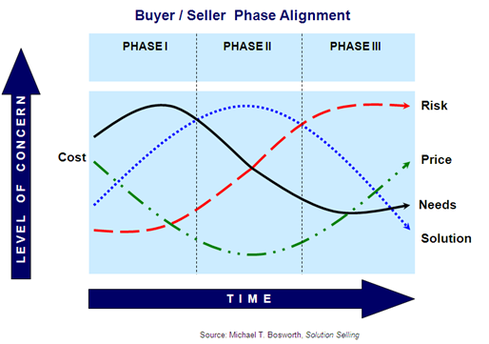 I read an interesting blog posting from Peter Bregman on the Harvard Business Review website, How Not to Lose a Sale. In the article, Peter shares a recent sales experience we can all learn from. To summarize, Peter loses a highly qualified sales opportunity by jumping to a proposed solution too early in the sales process. A friend of Peter's worked with the prospect and sponsored the meeting. The prospect was expecting to gain a better understanding of his issues by exploring the underlying cause(s). Once in the meeting, Peter, excited for the opportunity and eager to show his preparedness and expertise, began suggesting ways to solve the issue before allowing the prospect to discuss his view of the situation. Peter also ignored the recommendation of his sponsor to postpone an aspect of the discussion until a later time. As a result, the prospect was disappointed and failed to make a connection with Peter. Peter attributed his poor performance to a lack of “attunement”, a recent concept on persuasion that stresses the importance of appreciating the perspective of others. There were a couple reasons I liked this story. First, the sales scenario described hit painfully close to home. I’ve had similar experiences several times during my career. Maybe due to personality type, over-excitement, or desire for recognition, I’ve made the same mistake. It's an easy trap to fall into when face-time with busy executives is brief and competitors are close behind. Regardless of experience level, we can all benefit from this lesson. The irony is that it was Peter’s confidence, experience, and preparedness that diminished his chance of winning the sales opportunity; one that was his to lose. Second, Peter cites the recent research on influencing others in a book by Daniel Pink, To Sell Is Human: The Surprising Truth About Moving Others. Buyer alignment, a similar sales process concept to attunement, has been addressed by several sales experts and researchers over the years. It's one of the most important concepts taught to sales professionals. Although alignment is not identical to attunement, it also trains sellers to stay synchronized with the buyer’s thoughts and concerns throughout their buying decision process. While attunement may keep us empathetic with the buyer's perspective during the buying process, alignment reminds us that buying priorities and concerns shift throughout the process. Leveraging the two concepts will make you a better sales professional and improve your win-loss ratio. Here is a chart illustrating the phases of buyer/seller alignment from Michael Bosworth’s book Solution Selling; Creating Buyers in Difficult Selling Markets. What Does the Buyer/Seller Alignment Chart Tell Us? The seller must be aligned with the phases of buyer concerns to be successful. In Phase I the buyer is most interested in thoroughly researching and understanding the issue they are facing. Accordingly, this must be your primary concern in this phase as well. In Phase II, the buyer is focused on possible solutions to their problem. This is the time to present and discuss how your offer provides the best approach to resolve Phase I issues. By Phase III, the buyer has decided on the best partner and is performing additional calculations on any risks associated with their selection. Peter’s experience was a classic case of buyer/seller misalignment. In the meeting, the buyer wanted to gain a better understanding of the issues and root causes (Phase I). Peter was eager to talk about his past knowledge and experience solving similar issues (Phase II). Their expectations for the meeting were not aligned. The prospect became frustrated and felt pressured and “sold-to”. The seller was confused as to why a better connection was not made. The disappointed buyer will now have to look for additional sellers who might be in better alignment. If the next seller can stay aligned and attuned, they have a much better chance of becoming this prospect’s solution partner. In Peter’s post meeting self-critique, he concludes that he should have taken a less prominent role in the meeting by, ”sitting in the chair he was offered, listening to the prospect tell his story, seeing the situation from his eyes, analyzing it from his point of view and feeling his emotions...” What I felt was needed (to borrow a phrase from a recent national foreign policy debate) was a philosophy of “leading from behind”--taking an ultra-patient, listening posture and judiciously reserving value-add comments and ideas until follow-on meetings. In doing so, Peter might have minimized the perception of being controlling or “pushy” until after his prospect had completed Phase I. He also should have followed his sponsor’s advice to postpone one specific topic until a follow-on meeting. Learnings From Peter's Experience
Summary Learn from, but don’t overreact to, a single experience. Every interaction will be different. When in doubt, ask what you wanted to ask and say what you wanted to say while you’re there--it may be your only opportunity. You can’t practice chemistry. Be authentic and try your best to be attuned and aligned. In spite of what some “experts” say, don’t try and change who you are for each prospect. Your next prospect may appreciate the confidence and strength of your style. Chair size and heights don’t matter, new ideas and situational knowledge does. Just don’t risk taking the seat at the head of the table...  Sales Rule #1: Know your buyer and what they want to achieve. It’s a simple rule but one that is often overlooked by the most experienced and successful salespeople. I’ve worked with over a hundred account teams, facilitating sessions to help strategize their organization’s highest-potential accounts. Periodically, the session is hijacked by a sales opportunity so significant that it warrants reallocating some time to the strategic planning of the opportunity. Yet I’m often surprised at the lack of basic understanding of even the largest, most significant sales opportunities. Seller organizations must thoroughly understand, from top to bottom, the customer’s context and vision before spending any time or resources on a sales opportunity. When The Customer’s Vision Changes I recently, worked with an experienced, cross functional account team for a high-tech, B2B products and services company. The 15-member strategic account team had well over 200 years of combined technical sales, support and product engineering experience. Only two years prior, it had unseated the industry leader, a company 100 times their size, as the strategic global supplier for a customer midway into their competitor’s five-year contract. Winning the deal was a true David and Goliath story. Just two years into the contract, though, the team was mired in an endless stream of out-of-the-blue customer queries, ideas and requests. After a very synergistic two-year relationship, the account team had spent the last few months (including weekends) responding to multiple disjointed and seemingly unrelated mid-contract proposal requests. It was as if the team was intentionally being dragged through rings of fire to prove their loyalty or worthiness. The information requested by the account team’s primary contact seemed very long term and visionary--way beyond their area of responsibility. The relationship with this account, a Fortune 50 company and global leader within their industry, seemed to be spinning out of control before the team’s eyes. “Who do you think is really making these requests?” I asked. Before we spent any more time and resources responding to ad-hoc requests for complex information and hypothetical “what-if” pricing, we needed to know who was behind them. It was apparent someone in the organization was formulating a new vision, and we needed to find out whom as soon as possible. Until we were confident in our understanding of the vision to which we were being asked to contribute, it made no sense for the team to spend more time and resources responding to possibly unapproved and probably unfunded requests. I didn’t think the team’s current whack-a-mole approach would result in a positive outcome. What Was The Source Of This New Vision? Was it... • A competitor planting seeds? • A newly hired executive with fresh ideas from a previous company or industry? • The IT organization trying to push their internal customer organization to new frontiers? The possibilities seemed to go on and on. A recent CEB study concludes that due to the vast amount of online information available, approximately half of B2B buyers’ due diligence has been completed before any first formal sales contact (HBR-The End of Solution Sales). Prospects know what the solution to their problem looks like and how they might achieve their vision long before any formal sales contact with a potential solution provider. In this case, even though this team was the incumbent, on-site vendor, there was no assurance they were receiving preferred access to the executive decision makers. After all, they had been hired midway through the previous vendor’s contract;was the same thing happening to them? I recommended the team pause and briefly step back with this customer, treating it as if it were a new account opportunity. I asked the team to create a formal sales project plan to acquire the necessary information. Before responding to additional customer requests, they needed to thoroughly understand the answers to these three critical questions:
It’s So Simple. How Does It Still Happen? This is a back-to-basics issue that is too often overlooked and, I suspect, adds greatly to the recent downward trend in forecasted sales losses, now greater than fifty percent. See CSO Insights 2014 Sales Performance Study Easy on-line access to relevant, comprehensive information, customer request complexity, decreased salesperson competency, and first-line sales manager to sales representative management ratios all contribute to the potential lack of understanding of the client/prospect's vision. Difficulty gaining appointments with executives responsible for shaping the future vision often compounds the problem. Many times, there seems to be an inverse relationship between the strategic significance of the sales opportunity to the buyer and the sellers’ lack of knowledge of the customer’s vision. The teams often seem to know the least about the largest, most strategic opportunities. I suspect the breadth and complexity of the most mission-critical sales opportunities can overwhelm even experienced pursuit teams. No account team will win a significant sale though without a thorough understanding of the customer’s goals and vision for the future. You must discover whose vision it is and how and where it was developed. A stringent, formal internal sales process that qualifies sales opportunities for resource investment may be the best method to ensure your sales teams have a thorough understanding of their customer’s vision. If your team can’t identify the true buyers, and motivate them to share their vision with you, stop your sales investment and lose early. Use the time to re-invest in relationship-building activities to develop new sales opportunities. I was looking through some of my papers the other day and I came across one of my favorite articles written by a close friend of mine, Jerry Kanter, titled: “Planning and Managing Your Career." Although this subject is not something that I typically write about, I thought it would be helpful for anyone in transition. Jerry was the director of the Center for Information Management Studies at Babson College. He was a prolific writer and authored nine books and countless articles on computer and information technology. He was also an accomplished teacher, philanthropist and athlete. (He was a star on the Harvard University football and track teams--a track award for Most Improved Performance bears his name.) Jerry passed away in 2010. Re-reading his article made me think of what a great mentor he had been, not only to me, but to many others. What I like most about the article is Jerry’s insights into how to achieve your career goals while purposefully maintaining balance in your life. One day, we were talking about careers and he pulled this essay from his drawer. I read it and ask him if I could forward it to a colleague that was considering a career change. Jerry was a very private person and was initially slightly embarrassed by the request; he thought it was too “soft” compared to his other writings. After a little encouragement he conceded and was pleased to hear of the articles' positive feedback. I have shared his essay with manyrecent college graduates and colleagues that were reassessing their careers. I hope you like it. If you do, please share it with your friends and followers. I think Jerry would be pleased to know his quiet perspective on career and life helped guide someone in your life. What do Neil Young, Betty White, Bob Hope, Mark Twain, Ernest Hemingway, and Paul McCartney all have in common? Great comic timing? A villa in Tuscany? A love of the Classics? No, they were all victims of a premature obituary. It happened to Mark Twain twice, resulting in the now famous quote: ”The report of my death was an exaggeration.” Based on a recent Harvard Business Review article: ”The End of Solution Sales,” we can now add Solution Selling to that list.
The article was written by the members of the Corporate Executive Board and discussed the CEB’s recent study of 1,400 B2B customer transactions, which included 6,000 salespeople and 700 customers. The title caught my eye; anything sales-related is in my wheelhouse, so I was looking forward to a good debate. I was disappointed. The article had interesting research and good insights into the workings of a top salesperson, but it inadequately defended the title claim due to a fundamental lack of understanding of Solution Selling and how it is being implemented today. So, for all of you Chief Sales Officers and VPs of Sales out there--who have spent hundreds of thousands of dollars implementing a Solution Selling sales environment--there’s no need to panic. Insight selling is not a replacement for Solution Selling. The article proclaimed that a “novel, even radical sales approach is needed” (insight selling) to replace Solution Selling. While the underlying premise is correct [With the abundance of online information, buyers are better informed and have a more thorough understanding of offerings prior to any formal seller contact], their belief that insightful selling is radically different from Solution Selling, is not. Not only are the concepts of insight selling not radical, they are not new. Solution Selling (done correctly) incorporates many of the concepts presented in the article. We have been implementing insight concepts with our clients for years-- as have all good sales organizations. To be a good sales person, you always had to sell insightfully. The article is faulting Solution Selling for an organization’s poor sales methodology. Insight Selling vs Solution Selling: Much More Similar Than Different There were several major areas where I found the two approaches overlapped: Avoiding established demand. The authors speak of how top insight sellers avoid established demand. Solution Selling also targets emerging, yet unknown business needs. In Solution Selling, any opportunity where the prospect has a well-defined vision of the solution is discounted. Early access to buying stakeholders is key. If you are unable to enter the buying process early, a secondary approach(with a greatly reduced probability of winning)called Re-engineering Vison is recommended. Receiving a detailed RFP that your organization did not help shape, would be an example of being late to the process. In this example, your only chance of success would be to try to change the requirements so that they more closely align with your offerings. Upending your customer’s way of thinking. Much like the insight selling approach, open-ended sales questions in Solution Selling are also designed to uncover and discuss unrecognized needs. Regardless of which executive buyer/influencer they are speaking with, competent sales people use “what if”, “have you considered” or “has this come-up yet” questions very effectively. Knowledge of the prospect’s industry and market position are critical. Solution Selling models provide conversation planning models for team approaches, as well. Buying triggers. As a consultative sales person working within highly leveraged compensation plans for many years, I can tell you that organizational buying triggers have always been one of the most productive ways to allocate sales time. This is not a new concept exclusive to insight selling. All great salespeople look for the fastest path to a sale—and the resulting financial reward. Solution sellers, like insight sellers, rely on defensible, creative value propositions to justify expenditures, thereby minimizing a buyer’s request for price cuts. Opportunity pursuit scorecard. Variations of the go/no-go sales opportunity pursuit scorecard presented have been used by thousands of sales organizations over the years. Few sales opportunity pursuit models would recommend investing resources in any sales opportunity with less than a 50% chance of winning--especially if the selling organization was not present to help shape the vision of the solution. If you’re not winning (Column A in Solution Selling parlance), save the effort and cost of your sales resources and re-allocate them to more exclusive opportunities with earlier access to executives. Best practices. The CEB cites three best-practices from insight selling—all are commonly used within the Solution Selling framework:
Incorporate Insight Selling Concepts Into Your Solution Selling Environment Add a very early “share insights” step to your Solution Selling sales process. In a recent client sales process re-design, we added a Vision Creation step at the beginning of their formally defined sales process. We designed this step to include discussions on a variety of wide-ranging issues concerning the customer’s business including: industry direction, innovations and challenges, market trends and opportunities, and organizational/industry points of view. The success of this step was measured by the ability to schedule follow-on meetings with additional prospect executives (verifiable outcome in many Solution Selling models). Targeting the harder to reach mobilizers is good advice from CEB. As always, it is the key to the successful sales relationship. The top sales performers have always offered the best solution insights, ideas, and vision to prospective customers. It’s usually the reason they have gained access to decision makers ahead of their competition. Decision makers have always been tough to identify, meet and influence; they don’t grant access or share time easily. As one who has made thousands of sales calls and built and executed hundreds of sales opportunity plans, the phrase “easy to understand does not necessarily mean easy to do” comes to mind. Salespeople who lead with insights can’t do it alone, they will need the entire organization’s knowledge, creativity, and support to successfully engage and sustain executive mobilizer relationships over time. Summary Read the article for the insights into the characteristics of a star sales person. I agree that there has been a natural progression to insightful selling or whatever term you want to use to describe it. The value of a sales person is their ability to put forth new ideas and insights. Any seller who can share cross-industry concepts, transferable best practices, and fresh ideas will have a competitive advantage. The best ideas, shared earlier in the buying process--not product and service differentiators--make the difference between winning and losing, and always have. The insights in the article are valid, but they are not novel--nor are they radically different--and they by no means mark the end of Solution Selling. I was recently reviewing pageviews in my blog postings and realized the most popular article was The 5 Best Business Books You May Have Never Read. The five books listed provided actionable advice and ideas based on comprehensive and thorough research. My intention was to create a recommended reading list to help new sales and marketing professionals sort through the literary noise and easily find the most practical business development information. I find many of the recent business development books are too simplistic and do not provide the complex insights necessary to improve business development performance. Much time can be wasted if you don’t know where to look.
After reviewing my original list, I realized I should have added two books, both classics and both “must reads”: Book 6: Crossing the Chasm, 3’rd Edition: Marketing and Selling Disruptive Products to Mainstream Customers by Geoffrey A. Moore. Originally published in 1991, revised and updated for the third time in 2014. See it at: Crossing the Chasm at Amazon.com The “chasm” is probably the most important, single market adoption concept identified since Michael Huthwaite’s sales research on Seller/Buyer behavior. The latest edition provides new ideas for marketing in the digital world and gives recent examples of companies that have successfully navigated the “chasm”. If you’re not familiar with Moore’s chasm concept, it leverages the earlier diffusions of innovations theory work of Everett Rogers. The chasm concept refers to a time (and revenue) lag, based upon market adoption. The author segments corporate buyers into five categories; Innovators, Early Adopters, Early Majority, Late Majority and Laggards; each unique in the way they envision the future and select products and vendor partners. This market adoption time lag, or “chasm” occurs between the Innovators/Early Adopter category and the three other market adoption categories. Moore cautions managers and investors not to become impatient and abandon the enterprise before it reaches its full potential—a common mistake if organizations do not plan for this temporary lag in their product’s market adoption. Read this book first if your B2B customers embed your solutions to create their B2C products. The marketing adoption implications of the “chasm” concept are immense but the sales process model implications are even greater. Sales process models for pre-chasm, B2B sales must support longer, riskier sales cycles with greater time and resource investment. Subject-matter experts from across the seller’s organization will be required to participate in co-ideation (design-in) activities very early in the customer’s product development lifecycle. Also, when selling to customers with pre-chasm products, managing early sales activities (quantity and quality) will provide a more accurate forecast of future sales success than more lagging, outcome-based performance measures. Book 7: Sales and Marketing the Six Sigma Way by Michael Webb and Tom Gorman Sales and Marketing the Six Sigma Way. Originally released in 2006 and re-released in paperback in 2013. One of the best kept secrets of the business development world… It’s a few years old now but the concepts and tools remain the same, regardless of any new-media or social channels your target audience may prefer. You don’t have to be a 6 Sigma quality expert or certified “belt” to benefit from this book. It’s packed with good ideas, models, and techniques to help you think big (about the forest), and to think small (about the trees). It will easily be one of the most highlighted and referenced books in your office library. If you are a chief executive, you’ll have many questions for your sales and marketing leadership after reading it. The “Key Points” highlighted at the end of each chapter helps to prioritize the reader’s takeaways. Though the company case studies sometimes seem a bit simplistic, the exercise examples are robust and complex. The SIPOC model (Suppliers, Inputs, Process, Outputs, Customers) in the Chapter 4 supplement will be of particular interest to those considering a start-up venture; it’s great for brainstorming potential new business models, partners and markets. Ideas from this book will provoke beneficial debate on your current or planned business entity for years to come. You can thank me later... Click here to read the original post: The 5 Best Business Books That You May Have Never Read I was recently speaking with a friend who manages a professional services company. He was contemplating how much faster his business would grow if only he could more fully leverage the professional delivery staff. I’ve found this to be one of the greatest challenges facing professional services firms. I personally encountered the issue while leading the sales and marketing organization for a Big 6 information technology consultancy. With a technical staff of 1,800 consultants and a sales staff of 100, I realized that the key to our success would be our ability to leverage our secret weapon-- the large billable staff.
The technical staff often has the most credibility, the closest relationships, and the most thorough understanding of the client’s business. My mantra became: Everybody Sells. But given our staff profile, I knew this would be a difficult cultural change. They were hired for their technical competency, not their sales ability--most would have preferred a root canal to asking a client for a referral. So what can you do to educate and motivate your technical staff to leverage more business? Help them become better networkers. To follow is an outline of what they need to know to be successful: Networking for Increased Sales: Fear Not Networking, at it’s core, is asking friends and business associates for referrals. Professional networking is common practice. It’s most often the way that new business opportunities are surfaced. Some people feel that asking for a business favor may be perceived (inaccurately) as a sign of weakness or vulnerability. They fear rejection (failure), believing that their request will alienate a friend or business associate. While these fears are unfounded, it’s one of the reasons why it’s difficult--even for the most confident professionals. Remember, if you’ve done a good job for the client, it’s only natural that you would ask if they know anyone else who could benefit from your services. If they do, they would be more than happy to give you a lead. Not only are they helping you, they'll be helping a colleague that would benefit from your offerings. It’s the way business is done. Getting Started: A Step-by-Step Process It is never too late to get started. It’s important to approach building your personal network with commitment and discipline. If you harness your inner altruism, and commit to listening closely to the challenges of others, your efforts will be rewarded. Step 1. Assemble a master personal networking list. Make a list from all your contact sources: email address books, LinkedIn, Facebook, Twitter, alumni directories, past clients, Christmas card lists, etc. Don’t be discouraged if your list is short when you first start--with continued focus, it will grow quickly. Quality, not quantity, is the key. Determine what method of interaction will best suit each contact (face-to-face meetings, phone calls, emails, or via social media). Also, create a second list of contacts you’d like to connect with. Be prepared to mention their names to your contacts and ask for introductions. Step 2. Allocate a few hours a week to grow your professional network. Prioritize your contacts and then determine the frequency and method of contact. Anthropologist Robin Dunbar, the creator of the “Dunbar number”, claims that humans can only maintain 150 stable relationships--even if utilizing all the social networking platforms. Recent research on the optimal number of first level connections in LinkedIn seems to support his theory. I recently met with a sales professional who was between jobs. He said his work-life balance had eroded so much due to work pressures that his network had narrowed to just a few relationships in his assigned accounts. As a result, he had lost contact with those who could help him the most. The lesson: Maintain discipline and nurture your network. Don’t allow external factors to steal your networking time, regardless of what is happening in your career. Step 3. Prepare a few brief stories about how your company helps others. Your short verbal descriptions will help others envision how they, or others in their network, can use your products or services. Share recent examples that discuss your own personal experiences. Tailor and deliver your stories based on the industry/role/issue of the network contact you are speaking with. Step 4. Find your personal style. Be authentic. Practice a dialog that is natural and comfortable. One of the best networkers I know used to call me every few months and leave this message: “Hi Mike, John Smith here--no need to call me back if you’re busy. I was just curious how you were doing with that _________ issue you were wrestling with last time we spoke.” or “Just had a quick idea for you regarding that _________ issue you mentioned." By leaving such a message, there was never a question if I would return his call, but how soon. Step 5. Join an affinity group as a watcher. Volunteer to represent your firm by joining an industry association or trade group. It’s a great way to expand your network. Establishing face-to-face connections will also increase the probability of having your initial networking call accepted. Make sure to periodically prepare a formal presentation to report your observations to your firm; it’s a great way to hone your presentation skills. Note to Millennials: Join LinkedIn Recent research from the Student Advisor shows that millennials (ages 18–32) have one of the highest unemployment rates in the country today. In a recent survey, over 200 students from across the country were interviewed about their career goals and how they were preparing for their professional lives after graduation. Even though all students surveyed were active on Facebook, only one-third had a presence on LinkedIn, the primary online resource for networking professional opportunities. Ninety-three percent of those surveyed were unaware of the career importance of building and maintaining a professional brand online. An account on LinkedIn is a must for anyone looking for employment. You may also be interested in reading this related post: Planning and Managing Your Career: Lessons From a Master Summary Remember the person you are attempting to network with, regardless of title, is doing the same to grow their business. Be authentic and altruistic. Commit to a disciplined approach and get started. Don't worry about the number of initial contacts you have, quality not quantity is key. Do your best to help your clients build their network and your efforts will be rewarded. If you’ve done a good job and have earned their respect, clients are more than happy to help. image credit: kbunge.wordpress.com |
AuthorMike Peters is the managing director of the Whitespace Consulting Group, a global business development strategy firm. The Whitespace Consulting Group has been helping multi-cultural clients optimize their business development strategy since 2005. He can be reached at mpeters@whitespace-consulting.com. |
